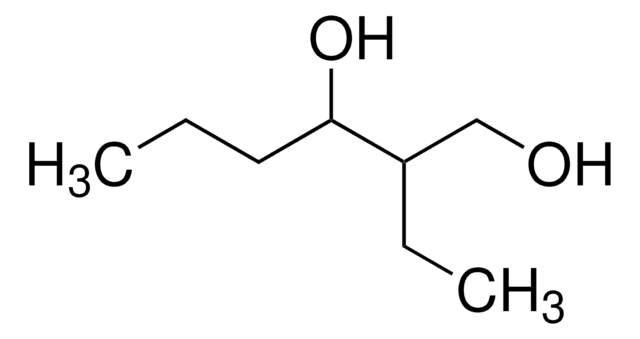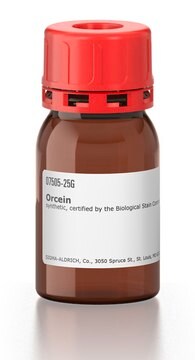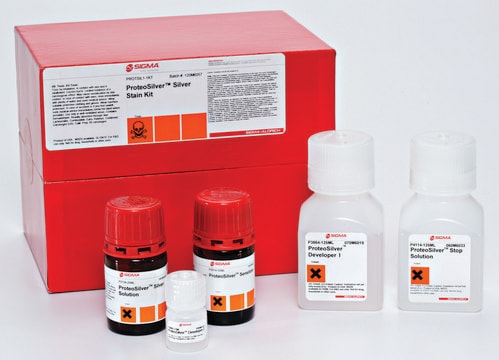PS102
2-Ethyl-1,3-hexanediol
analytical standard
Synonym(s):
Ethylhexylene glycol
About This Item
Recommended Products
grade
analytical standard
vapor density
5 (vs air)
packaging
ampule of 1000 mg
manufacturer/tradename
Chem Service, Inc. PS-102
technique(s)
HPLC: suitable
gas chromatography (GC): suitable
refractive index
n20/D 1.451 (lit.)
bp
241-249 °C (lit.)
mp
−40 °C (lit.)
density
0.933 g/mL at 25 °C (lit.)
application(s)
agriculture
environmental
format
neat
SMILES string
CCCC(O)C(CC)CO
InChI
1S/C8H18O2/c1-3-5-8(10)7(4-2)6-9/h7-10H,3-6H2,1-2H3
InChI key
RWLALWYNXFYRGW-UHFFFAOYSA-N
Looking for similar products? Visit Product Comparison Guide
Application
Signal Word
Danger
Hazard Statements
Precautionary Statements
Hazard Classifications
Eye Dam. 1
Storage Class Code
10 - Combustible liquids
WGK
WGK 1
Flash Point(F)
276.8 °F - closed cup
Flash Point(C)
136 °C - closed cup
Personal Protective Equipment
Regulatory Listings
Regulatory Listings are mainly provided for chemical products. Only limited information can be provided here for non-chemical products. No entry means none of the components are listed. It is the user’s obligation to ensure the safe and legal use of the product.
FSL
Group 4: Flammable liquids
Type 3 petroleums
Hazardous rank III
Water insoluble liquid
JAN Code
PS102:
Choose from one of the most recent versions:
Certificates of Analysis (COA)
Sorry, we don't have COAs for this product available online at this time.
If you need assistance, please contact Customer Support.
Already Own This Product?
Find documentation for the products that you have recently purchased in the Document Library.
Our team of scientists has experience in all areas of research including Life Science, Material Science, Chemical Synthesis, Chromatography, Analytical and many others.
Contact Technical Service






